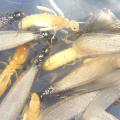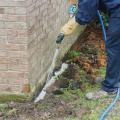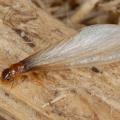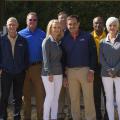References
Bennett, Gary W., J.M., Owens and R.M. Corrigan. 1997. Truman’s Scientific Guide to Pest Control Operations. pp. 145-168. Advanstar Communications. Cleveland, Ohio.
Messenger, M.T. 2002. The termite species of Louisiana: an identification guide. New Orleans Mosquito & Termite Control Board Bulletin No. 01-01. 12 pp.
Parman, V., and E.L. Vargo, 2008. Population density, species abundance, and breeding structure of subterranean termite colonies in and around infested houses in central North Carolina. J. Econ. Entomol. 101(4): pp 1349 - 1359.
Potter, M. F, 2004, Termites, pp. 217 - 361. in A. Mallis, S. Hedges and D. Moreland, eds., Handbook of Pest Control, ninth ed. GIE Media, Inc.
Rust M., and N-Y Su. 2012. Managing social insects of urban importance. Annual Review of Entomology 57: 355 - 375.
Shelton, T., D. Fye, M. Mankowski, and J. Tang. 2016. Termite testing continues: the USFS presents its annual termiticide report for 2015. Pest Management Professional, Apr. 2016: 52 - 70.
Thorne, B. L. 1998. Biology of subterranean termites of the genus Reticulitermes. pp. 1-30. in NPCA Research Report on Subterranean Termites. NPCA, Dunn Loring, VA.
Vargo, E. L. 2003. Genetic structure of Reticulitermes flavipes and R. virginicus (Isoptera: Rhinotermitidae) colonies in an urban habitat and tracking of colonies following treatment with hexaflumuron bait. Environmental Entomology 32: 1271-1282.
Vargo, E. L., T. R. Juba and C. J. DeHeer. 2006. Relative abundance and comparative colony breeding structure in subterranean termites (Reticulitermes flavipes, R. virginicus, R. hageni, and Coptotermes formosanus) in a South Carolina low country site as revealed with molecular markers. Annals of the Entomological Society of America 99: 1101 - 1109.
Vargo, E. L., and C. Husseneder. 2009. The biology of subterranean termites: insights from molecular studies on Reticulitermes and Coptotermes. Annual Review of Entomology 54: 379 - 403.
Dr. Blake Layton, Extension Entomology Specialist
Department of Entomology, Mississippi State University
Phone: 662-325-2960
Email: blake.layton@msstate.edu
Publications
News
Mississippi’s native subterranean termites have started swarming, and these structure-destroying insects will continue to swarm across the state over the next few months.
John Riggins, professor of forest entomology in the Mississippi State University Department of Agricultural Science and Plant Protection, said termites swarm to produce new colonies when the weather warms up, often after a rain.
Termites exist all over Mississippi and will eventually infest and damage any structure that contains wood or other cellulose components unless you properly protect those structures.
Invasive Formosan subterranean termites were first found in the state 40 years ago, and soon, these dangerous pests will swarm and threaten unprotected structures in about one-third of Mississippi’s counties.
Santos Portugal, Mississippi State University Extension Service urban entomologist, said Formosan termites typically swarm in the millions from early May to early June. They have the ability to infest and significantly damage structures much more quickly than native subterranean termites.
Success Stories
A dream of the Mississippi Pest Control Association and the Mississippi State University Extension Service is coming true after more than 20 years, thanks to a generous donation by one of Mississippi’s oldest pest-control companies.






